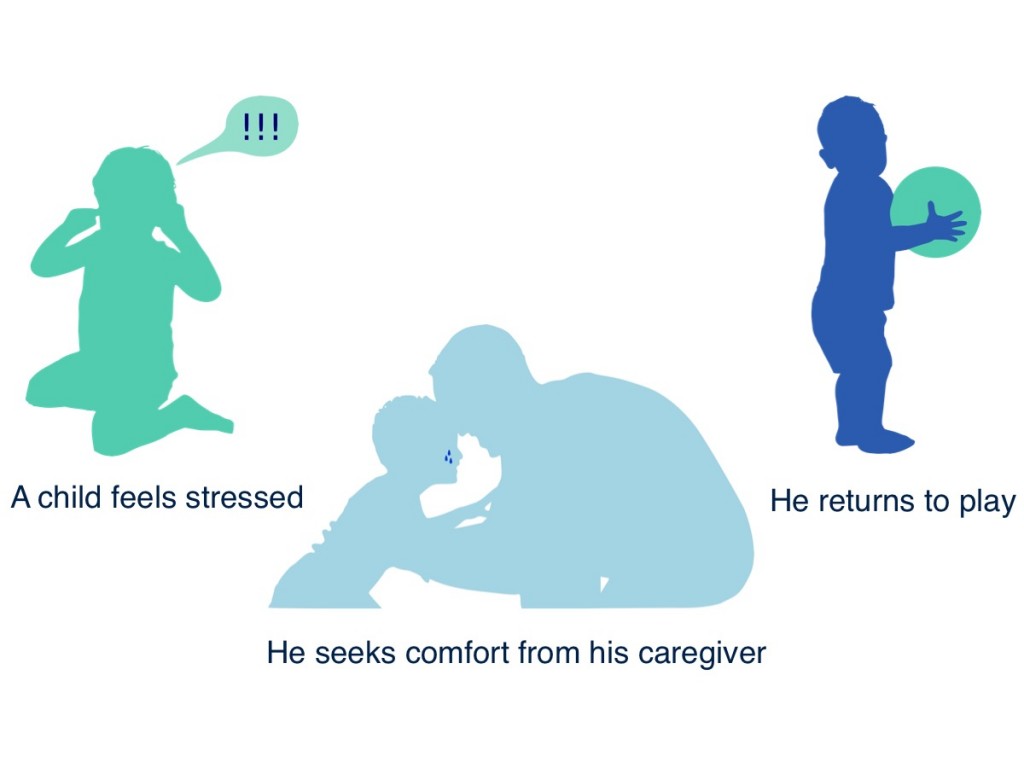
The observations of institutionalized children and baby monkeys sparked researchers’ interest in how children’s early social relationships affect development. John Bowlby, a British child psychiatrist, laid the foundations for attachment theory in the 1960s. He viewed the attachment process between infant and caregiver from an evolutionary perspective. In his view, attachment relationships can improve infants’ chance of survival by keeping them close to adults who can protect them. Infants are born with behaviors that grab adults’ attention, like crying. As a result, adults are more likely to provide warmth and support, or protect infants from danger. Over time, the infant-adult relationship develops into a strong attachment bond.
It is in children’s biology to form attachments. Attachment is one of four innate behavioral systems in the brain. The other systems are exploration, fear, and affiliation. A threat or stress activates the attachment behavior system. This prompts the infant to seek comfort from a caregiver. When that comforting contact is met, the attachment system switches off. Comfort from a caregiver decreases the infant’s anxiety. The infant can focus on exploration and play again. On the other hand, when the caregiver does not respond, the infant’s arousal and anxiety is not reduced. Over time, their attachment system can become hyperactivated or fail to activate at all.
Human infants are “wired” for attachment. Except for rare cases, infants form attachments to caregivers. This is true even for caregivers who don’t provide the most loving care. The attachment bond has universal features. But infants may feel different levels of security from them. Attachment relationships can be classified as more or less secure. Children use secure or insecure behaviors in response to the care they receive. For more information on attachment behaviors please see part two of the attachment module “Attachment in Practice.”
-
- Attachment
- the lasting emotional bond that forms between infants and their primary caregivers
- Proximity maintenance
- a child stays close to an attachment figure for comfort and protection
- Safe haven
- an attachment figure provides comfort and safety when a child feels unsure
- Secure base
- an attachment figure’s presence gives a child the confidence to explore her environment
- Separation distress
- a child experiences stress or anxiety when an attachment figure leaves